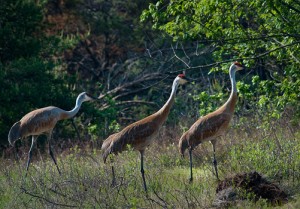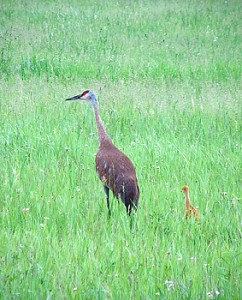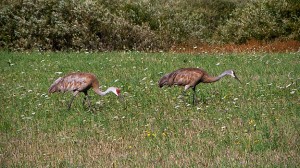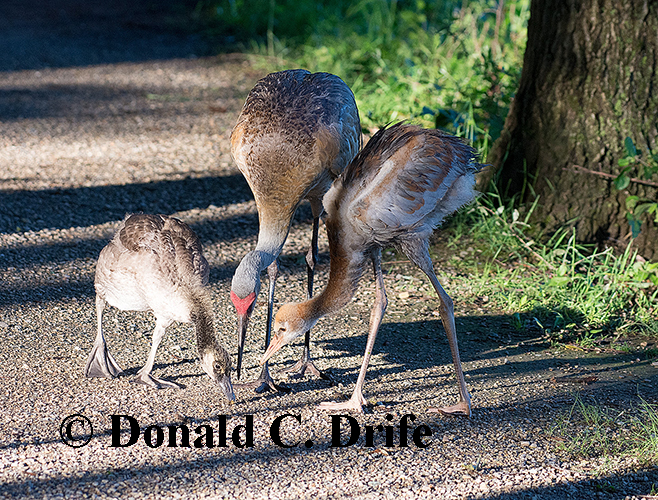
At Kensington Metropark near Milford Michigan a Sandhill Crane family has adopted a Canada Goose gosling. This extended family is the most photographed bird group in the state. A Canada Goose probably laid an egg in a Sandhill Crane nest. When it hatched the cranes adopted it as their own; feeding the downy gosling along with their own colt. Currently the gosling is feeding itself while foraging with its family. It seems to be developing normally and appears healthy.
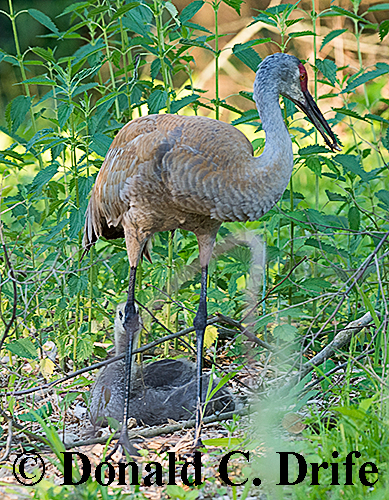
This is the first documentation of a Sandhill Crane raising a Canada Goose but it might have occurred before. Sandhill Cranes are typically secretive nesters so a mixed family would be unobserved. There is an article from Alaska Public Radio by Nina Faust titled “The Goose that Thought He was a Sandhill Crane” that could document another mixed family. It documents a Canada Goose that is traveling around Homer with a Sandhill Crane family. No one witnessed a gosling with the cranes. I often see mixed flocks of cranes and geese in fields during the fall as they congregate before migration. An extended family would be unnoticeable.
I doubt we will ever know what happens to this family once the young fledge. All the birds are unbanded and they will be untrackable once they leave the area. I hope the gosling’s instincts allows her (or him) to be a normal Canada Goose despite its incredible upbringing.
Copyright 2019 by Donald Drife
Webpage Michigan Nature Guy
Follow MichiganNatureGuy on Facebook

